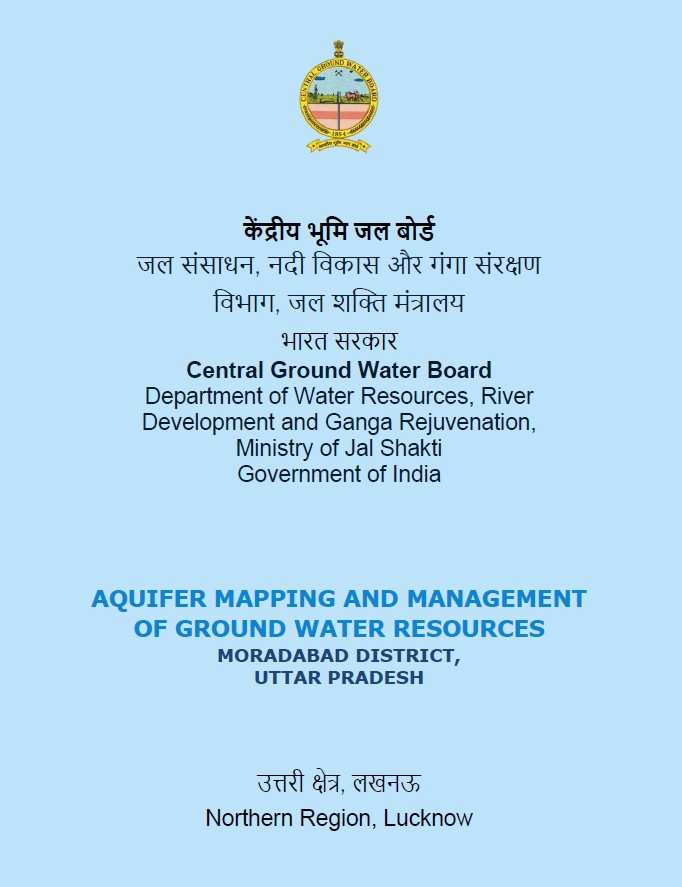AQUIFER MAPPING AND MANAGEMENT OF GROUND WATER RESOURCES MORADABAD DISTRICT, UTTAR PRADESH
| Category |
Aquifer Mapping |
| State |
Uttar Pradesh
|
| District |
Moradabad |
| Block |
Bhagatpur Tanda Bilari Chhajlet Dilari Kundarki Moradabad Munda Pandey Thakurdwara |
| Year of Issue |
2022 |
| Number of Authors |
1 |
| Name of Authors |
sanjeev mehrotra Scientist 'D' |
| Keywords |
Hydrogeology Groundwater resources Aquifer Hydrological cycle Water availability Water table Water quality monitoring Geophysical surveys Hydrological modeling Sustainability of groundwater ground water intervention, aquifer system study |
| File |
Download |
Moradabad district lies between 28
0
27’18’’ and 29
0
16’ 12’’ North latitudes and 78
0
30’ 07’’ and
78
0
59’ 13’’ East longitudes and falls in Survey of India toposheet No. 53 K and 53 L. Moradabad
district is situated at a distance of 167 km from National Capital New Delhi and 345 km north-
4
west of state capital Lucknow. Moradabad district is located in the eastern segment. In the North,
it is bounded Bijnor district Uttarakhand, in the east by Rampur and in the south by Sambhal
district in the west by Amroha district.
Moradabad was established as an office for the Chaupala Pargana during Emperor Akbar’s regimen
1624 AD. It was captured by Rustam Khan who named it Rustam Nagar. Later in 1625 AD its name
was changed to Moradabad after the name of Prince Baksh, the son of Mughal Emperor
Shahjahan. Geographically area of Moradabad district is about 2129 Sq km. Administratively, the
district has been divided into 4 tehsils which have been sub-divided into 08 blocks and total
population is 31,11,435 as per 2011 census.
Central Ground Water Board initiated the Aquifer Mapping Programme/Project in the district (Fig-
1.1) with the broad objective of preparing blockwise ground water management plan. Various
multi–disciplinary geo-scientific activities were undertaken in the study through in-house capacity
of CGWB for generation of micro-level hydro geological data.
5
